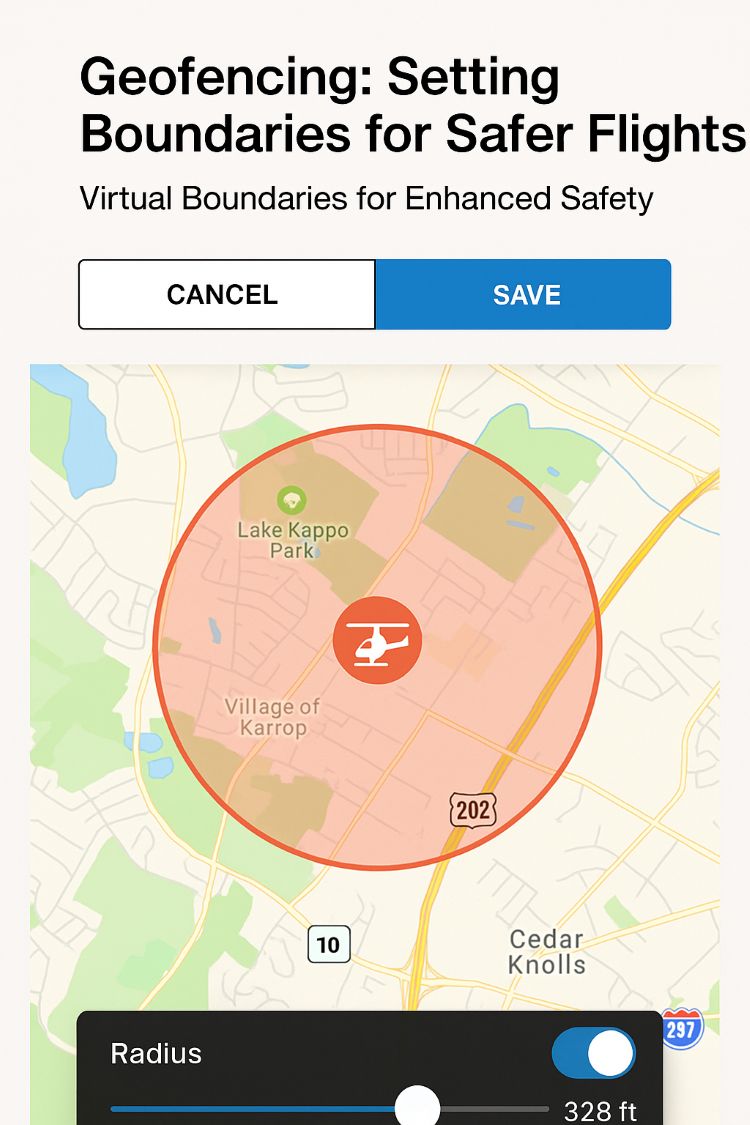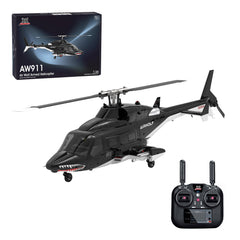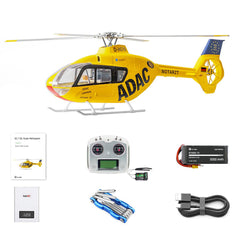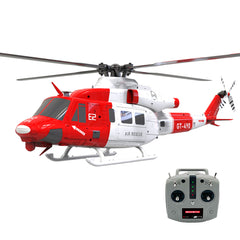GPS technology has revolutionized RC(remote control) helicopters, transforming them from manually piloted aircraft into intelligent, self-stabilizing machines. Unlike traditional RC helicopters, GPS-enabled models offer enhanced flight control, safety features, and automation, making them ideal for beginners and experts alike.
In this guide, we’ll explore the must-have advanced GPS features that elevate performance, improve flight precision, and ensure a safer flying experience. Whether you're a hobbyist or a professional pilot, understanding these technologies will help you choose the best GPS RC helicopter and maximize its capabilities.

How GPS Technology Enhances Flight Precision and Stability
GPS technology plays a pivotal role in enhancing the flight precision and stability of RC helicopters. With the ability to track location and altitude, GPS-equipped helicopters can hold their position with minimal input from the pilot, even in challenging conditions.
GPS-Enabled Stability and Navigation
Advanced GPS systems in GPS RC helicopters leverage dual-band GPS and GNSS (Global Navigation Satellite System) for faster satellite lock and superior accuracy. Unlike standard GPS, dual-band systems use multiple frequency bands (L1/L5) to reduce signal errors, ensuring precise navigation even in urban environments. Real-Time Kinematic (RTK) positioning offers centimeter-level accuracy, making it ideal for tasks like aerial mapping and cinematography.
Key benefits include:
- Auto-Hover Mode – The helicopter locks its position, reducing manual corrections.
- Wind Resistance – GPS-assisted stabilization compensates for gusts.
- Smooth Takeoff/Landing – Automated vertical control ensures safer operations.
The WOLFBUSH AW-911 Airwolf RC Helicopter is a fantastic choice for those looking to experience these advanced GPS features in a beginner-friendly package. With its GPS stabilization and auto-hover capabilities, this model is perfect for new pilots. It helps ensure a stable and smooth flight, even in windy conditions. Additionally, its easy-to-use controls and auto-return features provide peace of mind, making it a perfect entry point into the world of GPS-assisted RC helicopters.
To see the WOLFBUSH AW-911 Airwolf in action, check out the product video showcasing its advanced features:
Geofencing: Setting Boundaries for Safer Flights
Safety is a top priority for any RC pilot, and geofencing is an innovative feature that enhances flight safety.
Geofencing allows pilots to set virtual no-fly zones, preventing the helicopter from entering restricted areas (e.g., airports, private property). Advanced models feature:
- Adjustable Radius – Customize flight boundaries via a mobile app.
- Automatic Enforcement – The helicopter will halt or return if it approaches a restricted zone.
- FAA Compliance – Essential for legal drone operations in many regions.
Best for: Beginners and pilots flying near urban areas.

Advanced Auto-Return and Failsafe Systems
Dynamic Return-to-Home (RTH)
Auto-return and failsafe systems are fundamental to GPS RC helicopters, offering essential safety features. These systems automatically return the helicopter to its starting point when certain conditions are met.
A GPS RC helicopter with smart RTH can automatically return if:
- The signal is lost
- The RC helicopter battery is critically low
- Manual RTH is activated
Next-gen RTH features include:
- Obstacle Avoidance – Uses sensors to reroute around barriers.
- Precision Landing – Lands within inches of the takeoff point.
GPS-Enabled Altitude Hold and Positioning Systems
GPS-Based Altitude Hold
Altitude hold is another game-changing feature of GPS RC helicopters. This system allows the helicopter to maintain a constant altitude without the pilot's intervention. Benefits include:
- Stable Aerial Photography – Perfect for FPV and camera drones.
- Effortless Hovering – Great for beginners learning orientation.

First-Person View (FPV) Integration for Enhanced Aerial Experience
FPV Technology for Immersive Flying
Combining GPS RC helicopter FPV integration with advanced GPS creates an immersive flying experience. GPS data enhances FPV feeds by overlaying real-time telemetry, such as altitude and coordinates, for precise navigation. Follow-me mode, powered by GPS, allows the helicopter to track moving subjects like cyclists or vehicles, ideal for dynamic videography. Low-latency telemetry ensures seamless FPV performance, making GPS RC helicopters with follow-me mode a top choice for content creators seeking cinematic shots.
How to Maximize Your GPS RC Helicopter’s Performance
Pro Tips for Performance Optimization
- Battery Care: Always keep your batteries charged to the manufacturer’s recommended levels and avoid over-discharging them to maximize flight time and lifespan.
- GPS Calibration: Ensure the GPS system is properly calibrated before every flight to avoid drift and ensure accurate positioning.
- Firmware Updates: Keep your helicopter’s firmware up to date to ensure you have access to the latest flight enhancements and bug fixes.
Common Challenges and How to Overcome Them
GPS Signal Loss and Interference
GPS signal loss in dense environments, like cities or forests, can disrupt GPS RC helicopter navigation. To mitigate, fly in open areas with clear satellite visibility and avoid areas near power lines. Using dual-band GPS modules reduces interference, ensuring consistent tracking.
Battery and Power Management for Optimal GPS Performance
Power fluctuations can weaken GPS performance. Use high-capacity, manufacturer-approved batteries and monitor voltage levels to prevent dropouts. Store batteries at 50% charge to maintain longevity, supporting reliable GPS RC helicopter tracking.
Firmware Updates and Compatibility Issues
Ensure that your GPS RC helicopter is always running the latest firmware to avoid compatibility issues with GPS modules or other onboard systems. Firmware updates often include improvements in GPS accuracy, flight stability, and overall performance.

Conclusion
Advanced GPS features make GPS RC helicopters indispensable for precision, safety, and versatility. From dynamic geofencing to FPV-integrated follow-me modes, these technologies empower professional pilots and hobbyists alike. By prioritizing features like dual-band GPS, smart RTH, and waypoint navigation, you can choose a helicopter tailored to your goals, whether it’s aerial filming or competitive racing. Explore retailers offering GPS RC helicopters with advanced features to elevate your flying experience.
Discover GPS RC helicopters with cutting-edge features at trusted online retailers—Razordon.
Frequently Asked Questions (FAQs)
What are the benefits of dual-band GPS in RC helicopters?
Dual-band GPS uses multiple frequency bands for faster satellite lock and higher accuracy, ideal for urban environments or professional applications like aerial mapping.
How does waypoint navigation enhance GPS RC helicopter performance?
Waypoint navigation allows pre-programmed flight paths, enabling automated missions for surveys or cinematography, saving time and ensuring precision.
Can GPS RC helicopters perform in windy conditions?
Yes, advanced GPS systems maintain stability in winds up to 20 mph, with weather-resistant modules ensuring reliable performance in light rain.




